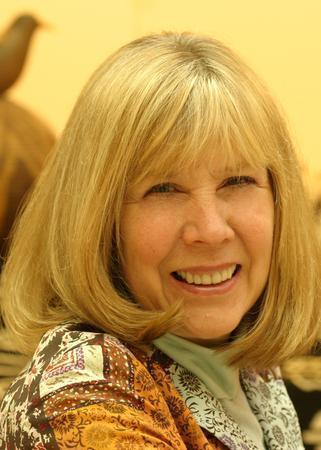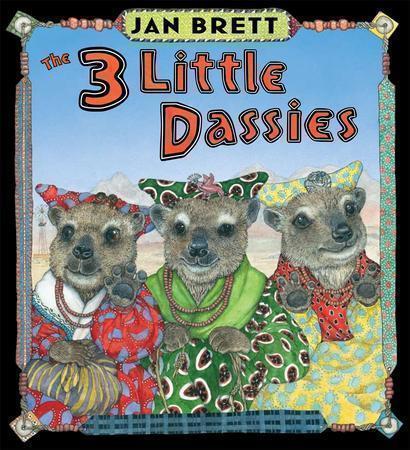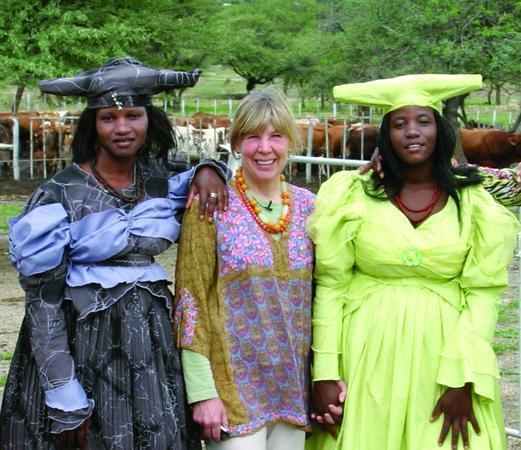 Like any creative thing that you do, it’s nice to have it go away for a while and then be able to look at it again and revisit it, says author/illustrator Jan Brett.
Like any creative thing that you do, it’s nice to have it go away for a while and then be able to look at it again and revisit it, says author/illustrator Jan Brett.
Looking at the finished of “The 3 Little Dassies,” Jan gets the feeling of being back in Namibia. “We really need to go back,” she told me during an interview leading up to her national tour for the book.
“On reflection, sometimes I wish that I had been a little bit more demanding of my friendships that I made over there and tried to ask more questions,” she told me during a phone interview. “I always kind of like I retreat into a little shell. Whenever I meet people in a different culture I feel like I’m prying in not a nice way, but I have so many questions I would like to go back and ask the people we met in that village.”
“The 3 Little Dassies” is a retelling of “The 3 Little Pigs” based in Namibia. It was a trip to the African country that inspired this new tale.
Jan and her husband, Joe, had come to see the rock carvings, which were beautiful, but Jan kept focusing on the dassies ducking in and out of the carvings. “I loved those little dassies … and they were at another campground where they were running around. ”
“I love the way they run into the little holes,” Jan said. “Just like the three little pigs where nothing can get them in their little rock houses. And I thought, ‘wouldn’t it be cute to make them the three little pigs because they’re so chubby and they have little cute noses.'”
There’s no wolf in Jan’s  book, instead the dassies must outsmart an eagle, which is their natural predator. With the help of a little boy who was at one of her book signings, Jan decided the eagle would come down the chimney of the stone house, but fall into a pot of boiling water.
book, instead the dassies must outsmart an eagle, which is their natural predator. With the help of a little boy who was at one of her book signings, Jan decided the eagle would come down the chimney of the stone house, but fall into a pot of boiling water.
It was one of the rare times Jan’s taken an idea from a child and run with it. Most of the ideas behind her books are her own. “It’s all in my mind, and then I’m really happy when the kids like them,” she said. “It’s kind of a misconception that they think I have a focus group. It’s not like that at all. It’s very interior. I’m the only one who controls my story except for my editor, who puts her two cents in.”
Jan generally doesn’t test her books on kids at all. “I’m the kid, she said, “the one who is enjoying the story, and I’m really happy for them to enjoy it, too. But in the process of making it, I’m not doing it for anybody, just for myself.”
“I want them to know that,” she continued, “because it’s the key to being creative, and the children need to know they’re not drawing their stories or their pictures for someone else. You can dedicate it to someone, that’s different, but when they’re thinking who would like it, they should be pleasing themselves.”
If you’re always think ing about your reader, Jan said, you’re not going to have as an authentic piece as if you’re thinking about your own sensibilities and your voice. Once you finish, she said, then, you edit and make informed decisions, but the real person you are doing it for is yourself.
ing about your reader, Jan said, you’re not going to have as an authentic piece as if you’re thinking about your own sensibilities and your voice. Once you finish, she said, then, you edit and make informed decisions, but the real person you are doing it for is yourself.
While on tour, that’s what Jan hopes to bring to children — the creative part. “Teachers are fantastic and they bring books to kids that might not have the chance to be read to at home,” she said. “I want them to have that experience. Some kids are creative and they’re just going to do it anyway, but how about the kid who is like that but is kind of getting pushed in other directions and they might not have a chance?”
Jan says her best advice for aspiring authors and illustrators is to just give yourself some time. You don’t need expensive materials. It’s important to remove other influences, such as noise from a radio or TV or other kids, and just play with your ideas and voice.
“I want them to hear their own voice,” she said. “And I want them to understand that.”
